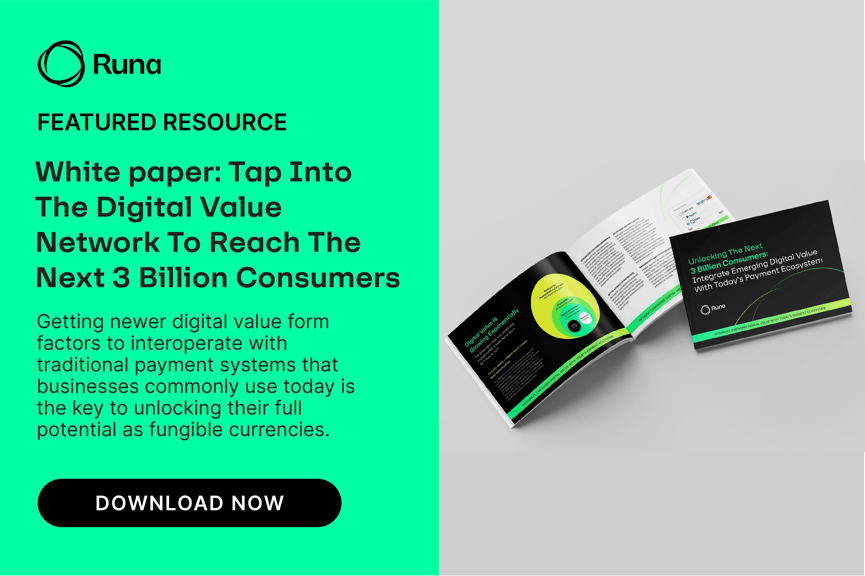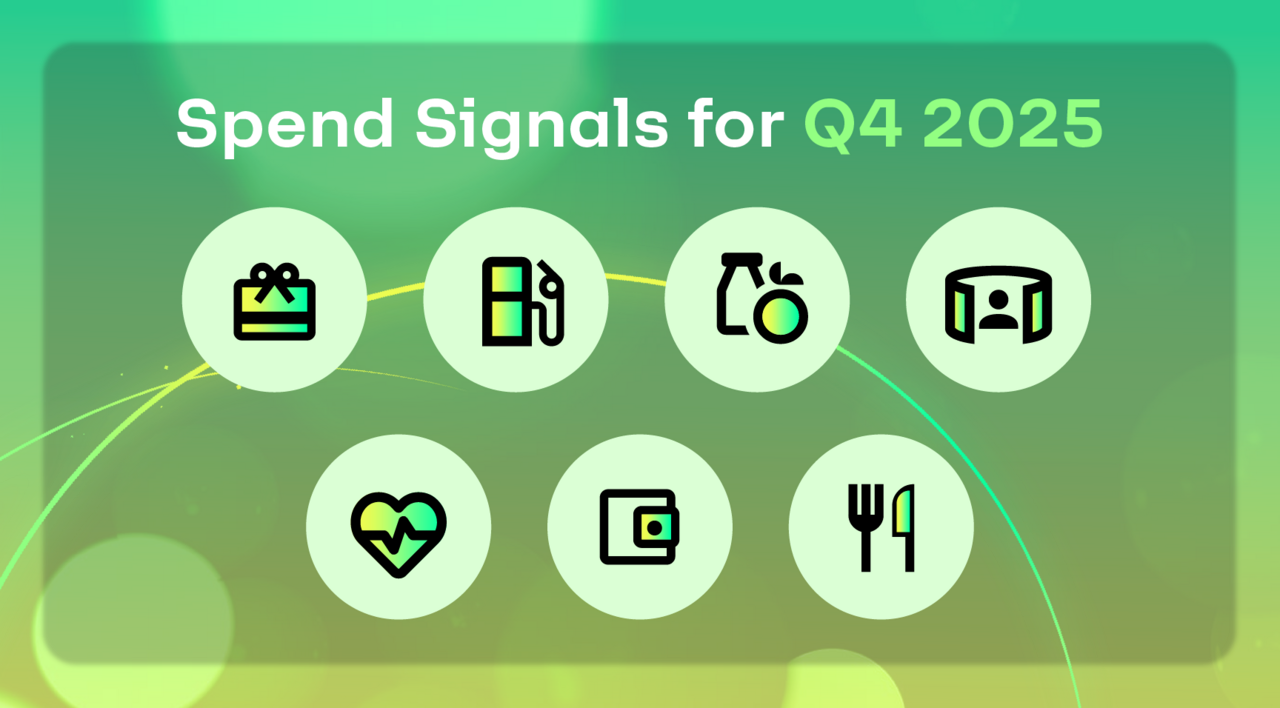To understand the future of digital value, it’s important to look back on its history.
Payments have changed. Societies once exchanged cash and coins, pounds and pence, and now exchange value through bites and bytes. The adoption of digital payments and the decline of cash has been a long time coming, but the demise of cash reached its tipping point during the global COVID-19 pandemic. Let’s take a look at the transformation of digital value over the past years.
What is Digital Value?
Digital value is any currency, electronic store of value, or medium of exchange that is managed, stored, or transacted on digital computer systems. Types of digital value include cryptocurrencies, central bank digital currencies, and virtual and branded currencies, such as gift cards, loyalty and reward points.
These assets may be recorded on a private or public centralized internet database or a distributed ledger and can be owned by a company, organization, individual, or bank. Digital value is not part of the fiat currency system, does not reside in a depository account with a financial institution.
The Decline of Analog Payments and Increased Use of Digital Value
The decline of analog payments have paved the way for digital assets and the exchange of their value to increasingly become a mainstream part of the economy.
The shift to e-commerce forced consumers to use alternatives to physical cash and paper checks. So much so that Business Insider estimated that checks would go away entirely by 2026! Business Insider’s was a bold prediction, but has been proven true for business-to-consumer (B2C), consumer-to-business (C2B), and peer-to-peer (P2P) markets as digital check replacements enter the market. Payment apps like CashApp, Zelle, Venmo, PayPal are integrated into consumer’s worlds, but businesses are still behind. In fact, Pyments reports that 81% of businesses globally (and 41% in the U.S) still pay other firms via paper checks, making it the most common business-to-business (B2B) payment method.
The current state of digital value is consumer-centric while B2B lags behind.
Current State of Digital Value
Today digital value has grown exponentially and can classified into four categories:
- Gift cards, digital cash, branded and virtual currencies currently make up the largest class of digital value. Digital cash such as open-loop and closed-loop prepaid cards, branded currencies such as airline miles, loyalty, and gaming points add up to the largest class of digital currencies, valued at over $2 trillion. The global open-loop and closed-loop prepaid market is expected to reach $3 trillion by 2027.
- Crypto currencies have been the fastest-growing digital value. Crypto’s market cap is projected to reach the $3 trillion point in 2030.
- Web3 assets will power an open standards virtual revolution. The crypto boom has given birth to a new decentralized world of DAOs, NFTs, DeFi, and GameFi which are powering new ways of thinking about ownership and work and how value will be exchanged.
- Fractionalized and tokenized value (such as fractional shares, ETFs, and public REITs) will further Web3’s impact on the world. According to research and surveys from institutions like the World Economic Forum (WEF) and Deloitte, a large part of our future economy will be driven by the fractionalization and tokenization of both digital and physical assets. With a 50-fold increase predicted between 2022 and 2030, from US $310 billion to US $16.1 trillion, tokenized assets are expected to make up 10% of global GDP by the end of the decade.
The 2020 pandemic accelerated digital transformation of society, including payments. Motivated by more sanitary and contactless ways to pay, and unable to visit physical banks or access cash, consumers demanded digital-first options for moving value.
Seventy-six percent of consumers have increased their mobile wallet use to some degree since lockdowns began and 90% of people expect to use their digital wallets with the same frequency after we come out of COVID-19.
In fact, as of 2021, 76% of adults globally now have an account at a bank, financial institution, or with a mobile money provider. COVID-19 unlocked the true potential of digital payments for the global economy to the point where digital payments are now mainstream in almost every region of the globe.
Despite digital value’s growth, it often can’t be used for everyday purchases because of its walled gardens—creating friction for consumers who are demanding more convenience. The largest friction point for any digital store of value is making it interoperate with other digital currency systems, as well as legacy fiat systems for everyday transactions. Even the traditional universe of branded currencies act as walled gardens. Try paying for a restaurant tab with airline miles. It is possible, but not without jumping through several hoops, which require converting one branded currency into another branded currency, such as an airline mile to a gift card.
The Future of Digital Value
Economies are moving into a digital first world and that's the catalyst for the future of digital value.
The Boston Consulting Group predicts that $16.1 trillion of physical assets will get digitized and tokenized. With this 50-fold increase predicted between 2022 and 2030, digital value must become accessible. Data also shows that the use of gift cards is on the rise, and customers are increasingly interested in digital gift cards. According to a report by Blackhawk Network, 62% of customers prefer digital gift cards, and the global gift card market is expected to reach $1 trillion by 2027. However, consumers are also looking for more flexibility and options beyond gift cards, such as cryptocurrency and fractional shares.
At the same time, there has been a surge in the use of APIs and technology by corporations to streamline their payment processes. A report by McKinsey found that the adoption of APIs could lead to a 90% reduction in onboarding times for new payment providers. This shift towards API-based payment systems opens up new opportunities for companies like Runa, who can provide a flexible platform that can integrate with any payment provider.
No matter how money, digital payments or digital value evolves, economies need an infrastructure that facilitates movement of any digital value. Runa creates an infrastructure framework to enable all kinds of digital assets to be used, exchanged, coexist, and form one coherent digital payment network, seamlessly facilitating B2C, C2C, and C2B payments. Runa is providing a tangible solution to help people use the value that they have earned just as they would like.
Learn more about Runa. Speak to an expert.


.png)

